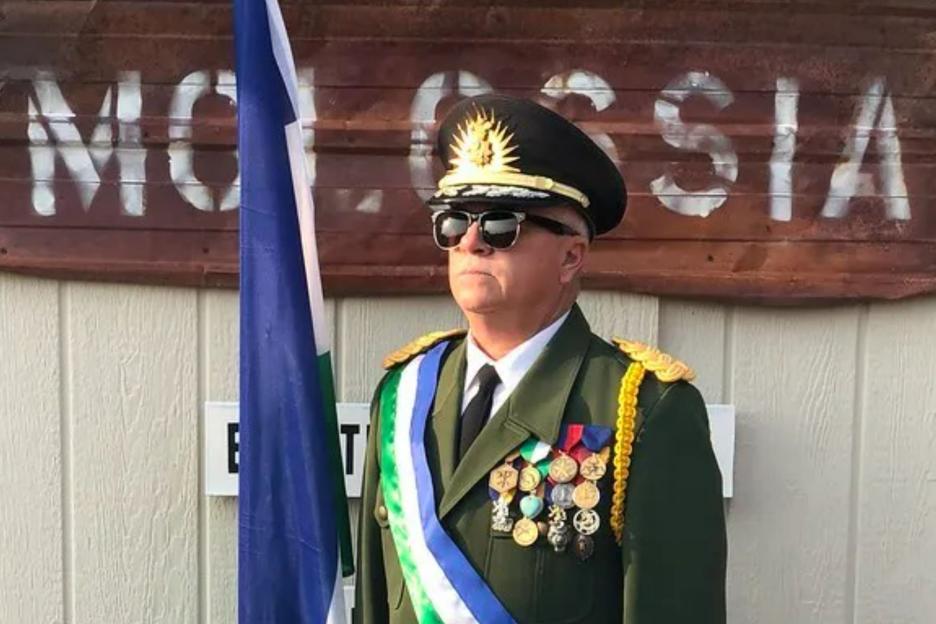There is a bit of a train wreck tendency in most marketers; we just love a good trash can fire.
Especially one that we didn't create.
And most importantly — one that we don't have to put out.
Of course, there is something to learn from every marketing mishap.
So without further ado, here are the top 10 worst marketing disasters of all time (and what we can learn from them).
1. Enron
It's nearly impossible to talk about a far-reaching, industry-changing, regulation-altering scandal and not lead with Enron.
This disaster went beyond marketing; the overhype and lack of transparency helped deeply inflate the value of (and disguise the shady and illegal business practices of) one of the more criminal corporations in U.S. history.
Its CEOs and various leaders were tasked with improving its public image and keeping the company's record clean for investors.
The scandal was so far-reaching that it left over 10,000 working Americans out of their pension and collapsed one of the biggest accounting and consulting firms in the country as collateral damage.
Advertisement Continue Reading BelowMany books have been written about this once-giant and its downfall, and it's a great case study for end-to-end crisis learnings.
TL;DR: Leaders must be accountable for their actions.
Many of Enron's top executives were even paid out their stock values (or sold with insider knowledge before the collapse) and were never criminally charged while their loyal team lost everything.
Further, inventing new accounting methods to win favor with investors and keep your losses off the books is ill-advised.
2. Fiat's Love Letters to Women
Sending love letters to consumers? A little weird.
Sending them exclusively to women, anonymously, to imply someone is stalking them? A terrible idea.
Someone should have told Fiat before the company sponsored 50,000 letters sent to the homes of women across Spain doing exactly this.
TL;DR: Assume that your customers (or would-be prospects) won't appreciate unwanted advances.
And this should have gone without saying, but don't send your customers direct mail saying you know where they live and imply you're watching them.
Advertisement Continue Reading Below3. BP CEO “Would Like His Life Back” After Explosion Kills Employees
After 11 people were killed in an oil rig explosion in the Gulf of Mexico in a tragedy that caused the worst oil spill in US history, BP CEO Tony Hayward was quoted as saying he “would like his life back.”
As families mourned their loved ones and BP employees and volunteers struggled to manage the crisis, he also deemed it a “very modest spill.”
Gaffe after gaffe, Hayward couldn't seem to put his personal pity party aside long enough to convey empathy for what had happened.
Needless to say, it created new outrage almost daily.
TL;DR: Crisis communications 101 is that loss of life supersedes any other messaging point in public statements. How you personally feel as a CEO in a situation like this generally doesn't matter.
Express empathy and concern for the families, and never, ever put your own emotional state into the mix.
4. Kenneth Cole Egypt Civil Unrest Tweet
Sometimes tweets directly from the CEO add humanity and excitement into the marketing mix and offer a peek behind the scenes.
Other times they put an unfiltered leader into hot water.
Such was the case when Kenneth Cole attempted to capitalize on civil unrest by using a crisis to promote his brand's spring collection.
Using protests and human indignity to sell products is distasteful and sure to incite anger among existing consumers, media, and prospects.
TL;DR: Don't use political unrest and social injustice as a chance for product promotion (see also Kendall Jenner in her 2017 Pepsi campaign).
5. Justine Sacco and Her Infamous Tweet
A cautionary communications lesson for anyone tweeting in the internet age, and maybe the first (temporary) casualty of cancel culture.
Though she was working in the PR industry in her greatest role to date, Justine Sacco infamously tweeted, “Hope I don't get AIDS. Just kidding! I'm white.” moments before wheels up on a plane during a family vacation.
She landed hours later to find the internet aflame in disgust.
TLDR: Tweet with consideration. The internet has a short attention span but a long public record. Sacco is not the first or last person whose old tweets continue to haunt them.
Advertisement Continue Reading Below6. Apple's Mandatory U2 Album Download
Did you have an iPhone in 2014? Then this is probably all coming back to you.
One morning, we all woke up to the new U2 album on our iTunes account despite never having expressed interest or opting in.
It felt invasive, and the internet was upset (and a little affronted that Apple thinks we all like U2).
Apple eventually set up a separate website to be able to delete it from devices that had the download, but the damage had been done.
TL;DR: Never auto-opt in your customers to a product download they didn't sign up for, and it's generally against the terms of service on most platforms.
500 million copies of the album published onto devices, and the company had lost a lot of goodwill and created frustration for loyal customers.
7. DiGiorno's Tone-Deaf Tweets About Domestic Violence
Twitter can be a wonderful tool for building community and conversation on important issues. It can also leave brands with a sense of FOMO and well-intentioned urgency to take part in new trends.
#WhyIStayed was a movement on Twitter for victims of domestic violence to raise awareness of factors that kept them in an abusive and dangerous relationship. It was trending in the wake of Ray Rice's brutal attack on his then-fiancee, and to share hope for others going through similar circumstances.
So needless to say, DiGiorno's tweet: “#WhyIStayed You had pizza” did not go over well.
TL;DR: Always research a hashtag before you try to hijack a trend. And if you've found yourself in the wrong, try and make it right quickly.
8. Bud Light Is “Up For Whatever”
No means no. Unless you're Bud Light.
The beer behemoth ran its second “Up For Whatever” campaign with (what were supposed to be) upbeat positive phrases. One such phrase, however, caught the wrong kind of attention:
“The perfect beer for removing ‘no' from your vocabulary for the night.”
Accused of promoting rape culture and ignoring glaring issues of consent, Bud Light ceased production on its campaign bottles.
Advertisement Continue Reading BelowTL;DR: Assess campaign messaging in the light of the current cultural environment.
It's also worth getting a set of eyes on messaging outside of the team that created it. And this should go without saying, but if it could be construed as rapey, just pick another slogan.
9. WOW Air Strands Passengers
When WOW Air (a former Icelandic Airline operating out of Reykjavik) declared bankruptcy, customers and employees were left out in the cold.
In fact, 10,000 of them were sitting in terminals worldwide waiting for flights that would never take off. Also, just minutes before shutting down operations, the airline was still selling tickets for future fares.
Gate agents, passengers, the operations team, and aircrew all received notice simultaneously that a planned buyout was no longer happening. The airline ceased operations effective immediately.
TL;DR: Do right by your customers and your team.
WOW Air knew more than a day ahead that the money wasn't going to come in. Instead of alerting their team and customers who were already in transit, they maintained silence until the company collapsed around them.
Advertisement Continue Reading BelowTheir competition, however, used it as a relationship-building opportunity to offer free or heavily discounted repatriation fares and build goodwill in the process.
10. Adidas and the Boston Marathon
An email subject line gone awry in the wake of the 2017 Boston Marathon landed Adidas in hot water.
With the 2013 event marked by tragedy, an oversight on Adidas' post-run sponsor email congratulated many runners on their “survival.”
Accidental? Of course.
Shocking, crisis-inducing, and gut-wrenching for those who lost friends and family in the event years before? Definitely.
TL;DR: After a major tragic event — especially one involving harm or death — gut-check your marketing. If the event was once tied to loss of life, approach with even more sensitivity.
Conclusion
Marketing is no easy task. There is a fine line between catching a trend, showing brand humor, and crossing the line into poor taste and consumer outrage.
Be sure to:
- Research trends before attempting to associate your brand with them.
- Know how a message could be misconstrued.
- Re-read your spokesperson speeches and media train your leaders.
- Never use human tragedy for marketing and you'll be in better shape than the 10 brands listed here.
More Resources:





